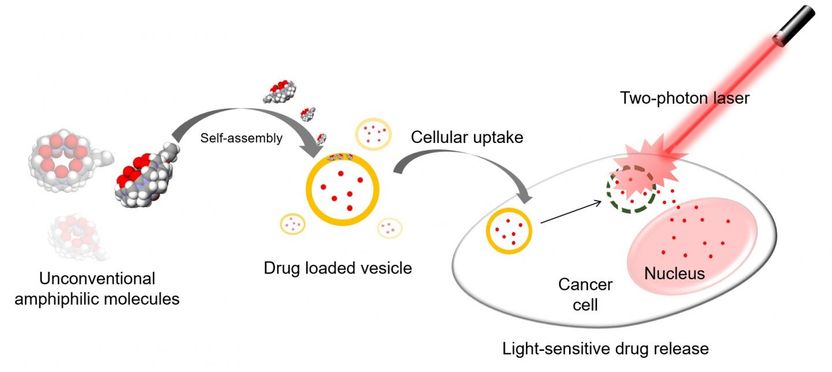New virus drug will have to shoot at moving targets
Advertisement
The reproduction of the deadly hepatitis B virus is dependent on the mobility of one of the virus's RNAs. This is shown by Katja Petzold and Jürgen Schleucher, Umeå University, Sweden, in an article in Nucleic acids Research. The Umeå researchers have studied the mobility of the virus's RNA, a property that is necessary for HBV to reproduce. Besides Jürgen Schleucher and Katja Petzold, Karin Kidd-Ljunggren of Lund University in Sweden and Sybren Wijmenga of Nijmegen University in Holland are co-authors of the article.
The structures of proteins and nucleic acids are usually presented as still images. However, the molecules' functions or interactions with drugs are dependent on structural changes, and it is possible to reach only indirect conclusions about these on the basis of still images. Nuclear Magnetic Resonance (NMR) is the only technology that enables studies of movements in specific parts of molecules. With the aid of NMR, the relationship between the movement and function of molecules has been mapped for many proteins, but only for a few nucleic acids. This is unfortunate, especially because several new classes of RNA with regulatory functions have recently been discovered. This means that RNA is now regarded to an even greater extent as an active regulator of cellular events, not merely a passive messenger for information.
When new HBV particles are formed in infected cells, the virus must translate RNA to DNA, a process that is called reverse transcription. It starts with the virus enzyme reverse transcriptase binding to a strongly conserved RNA structure in the virus. The authors found that fully conserved nucleotides (the building blocks of RNA) in this RNA evince striking patterns of mobility. This indicates that these nucleotides in the free RNA temporarily visit the structures that they use in complexes with reverse transcriptases, and that their mobility facilitates binding. This means that drugs directed toward the hepatitis virus RNA need to bind to a moving target.
These detailed findings are based on the first application of a new NMR method that was developed at Umeå University. The new method enables studies of movements in the bindings in the RNA molecule that give it its form. The method can also be used for complex bindings between drug candidates and proteins or nucleic acids in order to elucidate the stabilizing forces at the atomic level. Therefore, this can be a key tool in biotechnology and the discovery of new drugs. The research team is now moving on to computer simulations to produce images of the movements in an RNA.
Original publication: Petzold et al.; "Conserved nucleotides in an RNA essential for hepatitis B virus replication show distinct mobility patterns."; Nucleic Acids Research 2007.




















































